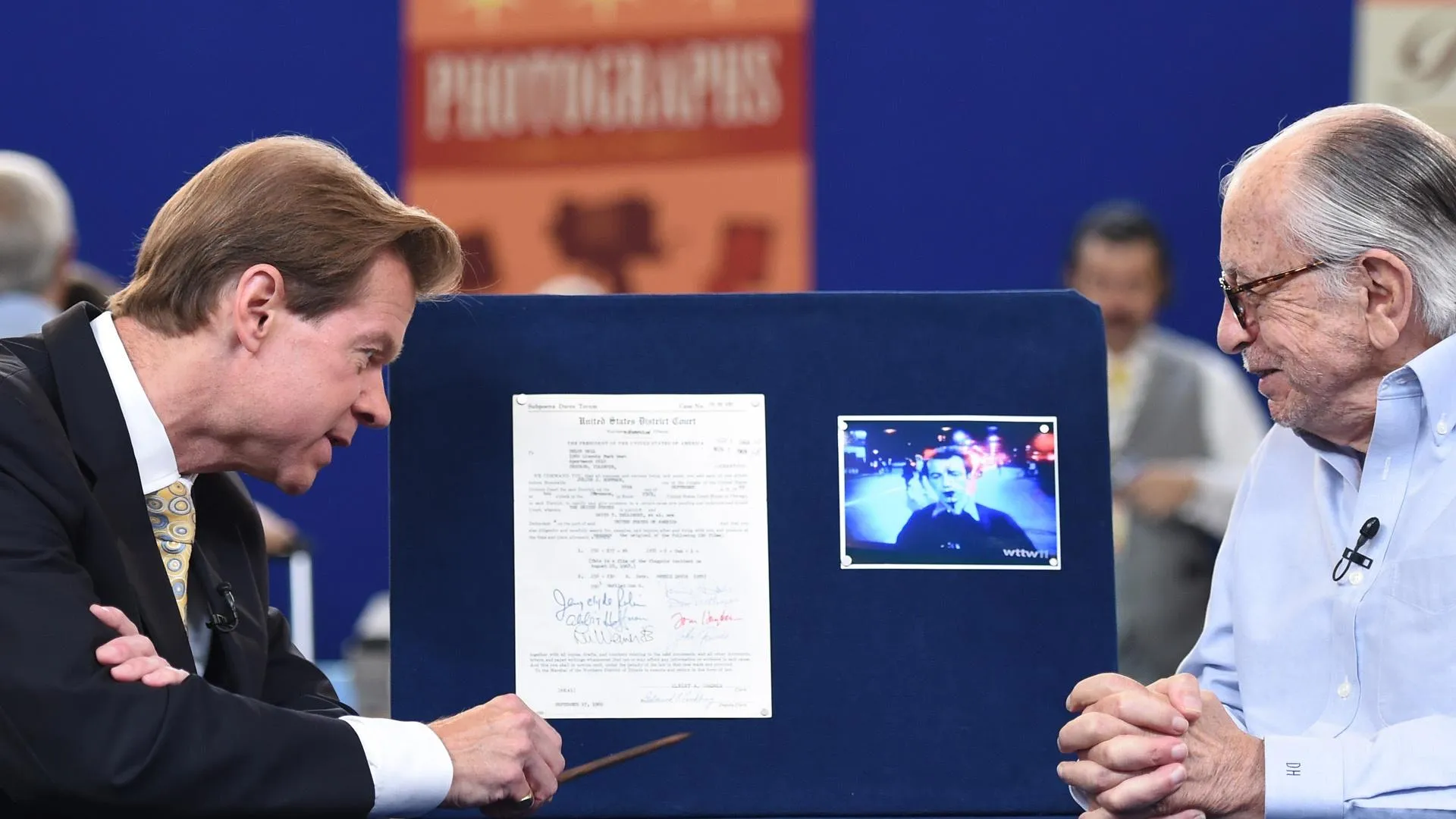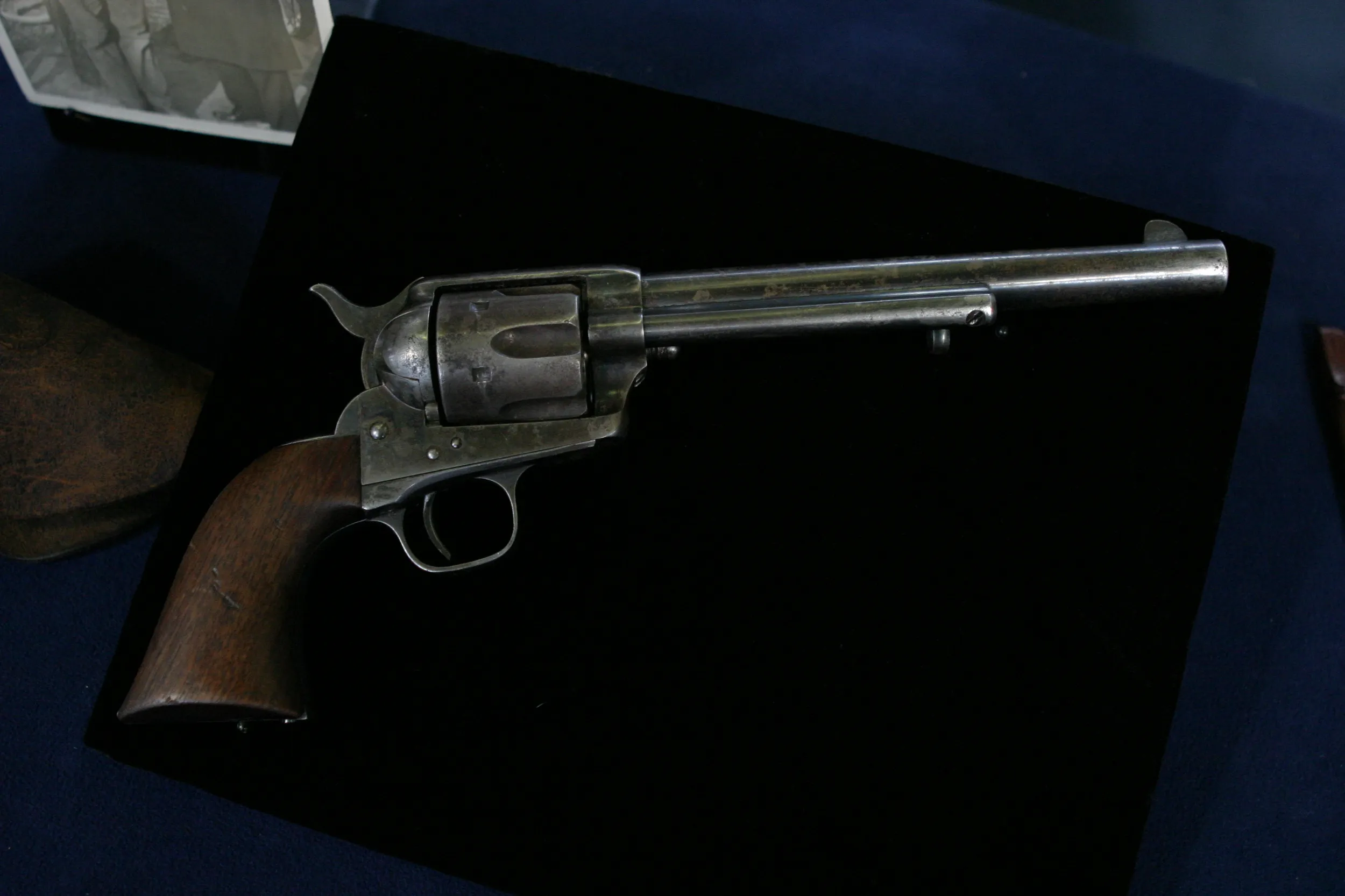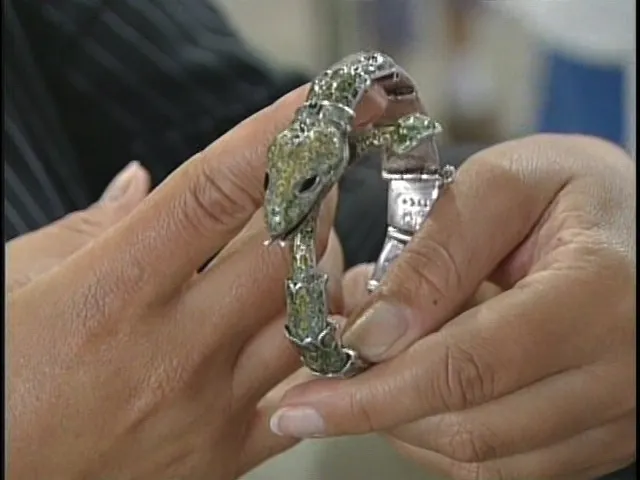HOST: This is the arch that served as the entrance to the old Chicago Stock Exchange, designed by the firm of Adler and Sullivan in 1893. The stock exchange became a casualty of urban renewal and was leveled in 1972. But its destruction gave momentum to a movement to preserve other Chicago buildings, many that have become National Historic Landmarks. The arch and other salvaged artifacts have found a home at the Art Institute of Chicago. I met up with Leigh Keno to look at a few of these fascinating architectural fragments.
HOST: Leigh, it is great to see all these architectural relics here in the museum-- some from buildings that are still standing, but many from buildings that no longer exist, like the Chicago Stock Exchange.
APPRAISER: Yes, and we're standing in front of this incredible elevator bank from the first floor of the Chicago Stock Exchange, built by the Adler and Sullivan firm. Louis Sullivan was the father of the modern skyscraper. And this door is an incredible combination of wrought iron, cast iron, copper-plated bronze and copper-plated cast iron, in this intricate pattern of organic and geometric shapes. It's really a symphony of motifs from the period, and it is classic Sullivan. When the building was demolished, sadly, in 1972, parts were just given away and some destroyed and melted down. But some survived, and at auction, smaller ones have come up from upper floors and brought in the six figures. So one like this would be hundreds of thousands of dollars.
HOST: We go from this masterpiece by Sullivan to work by one of his most famous students, Frank Lloyd Wright. Frank Lloyd Wright. We take a look at this beautiful stained glass, this triptych. Tell me about this.
APPRAISER: Frank Lloyd Wright was of course, undoubtedly one of America's greatest architects, and he made his reputation between 1900 and 1910 developing what is now known as the prairie style. But in 1909, 1910, he spent 18 months over in Europe, and he was really influenced by the Modernist artists there like Kandinsky. As a result, we have this work, which is built for the Avery Coonley Playhouse, in Riverside, Illinois. It was designed in 1911 and he built the playhouse circa 1912, and did this house with these incredible windows. Mrs. Coonley decided she wanted to teach her own daughter and children in the neighborhood in the kindergarten.
HOST: And he called this triptych the "Kindergarten Symphony?"
APPRAISER: He called it the "Kinder Symphony." And they say that Frank Lloyd Wright was influenced by a passing parade, with balloons and confetti, and the American flag in it, and as well he was influenced by this interest in Japanese culture, and he collected Japanese prints. Similar pieces without the side panels have brought into the six figures. So you can just imagine that if one were to come up, like this, with its three panels all intact, and considering that it's really one of the greatest known from the house, would easily bring in the $400,000 range or more.
HOST: Well, it's just beautiful, as are all of the architectural relics you see here at the museum, but you certainly picked two wonderful ones to showcase. Thanks so much, Leigh.
APPRAISER: Thanks, Mark.











